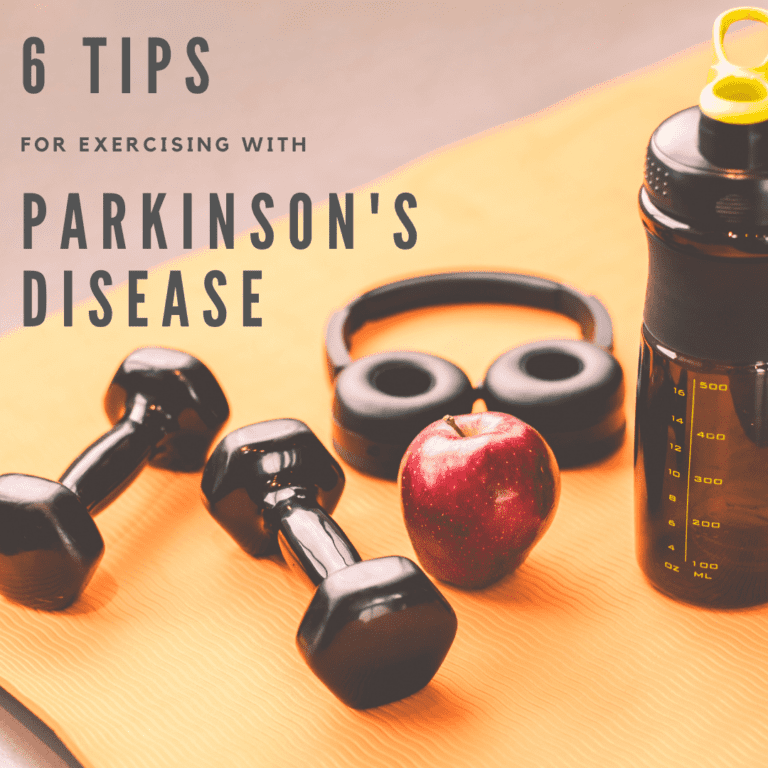When being diagnosed with Parkinson’s disease (PD), you may find yourself anxious about how to live with the disease. Although the disease itself has no cure, it is very possible to live well with PD. However, this generally means that you will need to work with your doctor to determine the best treatment option for your individual case. In most cases, you can expect your doctor to prescribe dopaminergic medications that increase dopamine levels in the brain to reduce symptoms such as tremor, bradykinesia, limb rigidity, and balance problems. In some cases, surgery may also be used to relieve symptoms.
While medications and surgery are two ways to help alleviate symptoms caused by PD, they are not your only options. In fact, research has found that exercise is highly beneficial in helping people with PD manage their symptoms. The Parkinson’s Foundation notes that “For people with Parkinson’s disease (PD), exercise is more than healthy–it is a vital component to maintaining balance, mobility, and activities of daily living”.
Currently, the Parkinson’s Foundation is conducting the largest-ever clinical study of Parkinson’s disease known as the Parkinson’s Outcomes Project. The study, which is ongoing, began in 2009 and is evaluating over 13,000 individuals with PD in five different countries. Despite the fact that the study is still ongoing, initial findings from the study show that people with PD who start exercising sooner for a minimum of 2.5 hours a week experienced a slower decline in their quality of life. In some cases, exercise was also found to change the course of the disease.
Although exercise in general is beneficial to your overall health, there are certain forms of exercise that have been shown to be more effective for people with PD. In order to get the most out of your exercise routine, the Parkinson’s Foundation recommends:

- Aerobic activity 3 days a week for at least 30 minutes per session
- Strength training 2-3 non-consecutive days of the week for at least 30 minutes per session of 10-15 reps for major muscle groups focusing on resistance, speed, or power
- Balance, agility, and multitasking 2-3 days per week with daily integration if possible
- Stretching 2-3 days per week with daily stretching if possible
Some examples of exercises that include these elements include:
- Boxing (non-contact)
- Biking
- Dance
- Gardening
- Golfing
- Pilates
- Resistance training
- Swimming
- Tai Chi
- Walking
- Water aerobics
- Weight training
- Yoga
Ultimately, you may need to try a few different forms of exercise before you find the one that works right for you. The study found that the type of exercise did not matter, as long as it was consistent. Since PD can cause different symptoms in different people, this means that there is no one-size-fits-all exercise program. Until you figure out what works for you, here are some tips for exercising with PD:
Talk to Your Neurologist
Another important finding of the Parkinson’s Outcome Project was that regular neurologist care can help save lives. This is because your neurologist can help you better understand and manage PD. They can also help you to develop an appropriate exercise program and make recommendations on what would work best for your symptoms. They can also prevent you from taking on too much too soon and becoming injured.
Work with a Physical Therapist
After speaking with your neurologist, it may also be helpful to work with a physical therapist who has experience in treating people with PD. Physical therapists can help you identify your physical limitations and can design a customized exercise plan that helps you to improve upon these limitations. They can also teach you how to exercise properly in order to avoid becoming injured.
Monitor Your Steps
One easy way to start the exercise process is to simply walk more. To know how many steps you take daily, it is recommended to buy a pedometer or use an app on your phone. Tracking how many steps you take can allow you to set goals to be more active without feeling like you need to do a full workout every day. Even walking around the grocery store becomes an easy way to accrue steps and meet your activity goals for the day.
Pick Something You Enjoy

A large part of finding an exercise program that works for you is to find something that you enjoy doing. Some people enjoy exercising more than others, and some forms of exercise can seem more like play than work. It is up to you to try a few different types of exercise in order to find a form of exercise that you enjoy (or can tolerate). If you enjoy exercising, then you are more likely to continue in the long run. If you simply do not enjoy exercising, then you can try working out with a friend or family member to make it more of a social activity rather than an obligation.
Make Exercise Part of Your Routine
When developing an exercise plan, it helps to set aside a certain amount of time each day or each week that you will devote to exercising. One easy way to do this is to sign up for an instructor-led class that meets at a certain time. Exercise classes for individuals with PD are becoming more and more popular, so check out your area for them. Another way to make exercise part of your routine is to schedule your workout with another person so that you can hold one another accountable.
Keep Going
A common PD symptom is fatigue, which can make it harder to want to exercise. However, research shows that most exercise helps to decrease fatigue over time. While you may feel more fatigued when starting an exercise program, this should eventually fade. It may be helpful to keep a workout journal that monitors your fatigue level so you can speak with your doctor and make adjustments as needed.

Dr. Kashouty, a diplomate of the American Board of Psychiatry and Neurology (ABPN), practices general neurology with fellowship trained specialization in clinical neurophysiology. Dr. Kashouty finds the form and function of the nerves and muscles the most interesting part of neurology, which is what led him to specialize in neurophysiology with more emphasis on neuromuscular conditions. He treats all neurological diseases, but his main focus is to treat and manage headaches, movement disorders and neuromuscular diseases.




